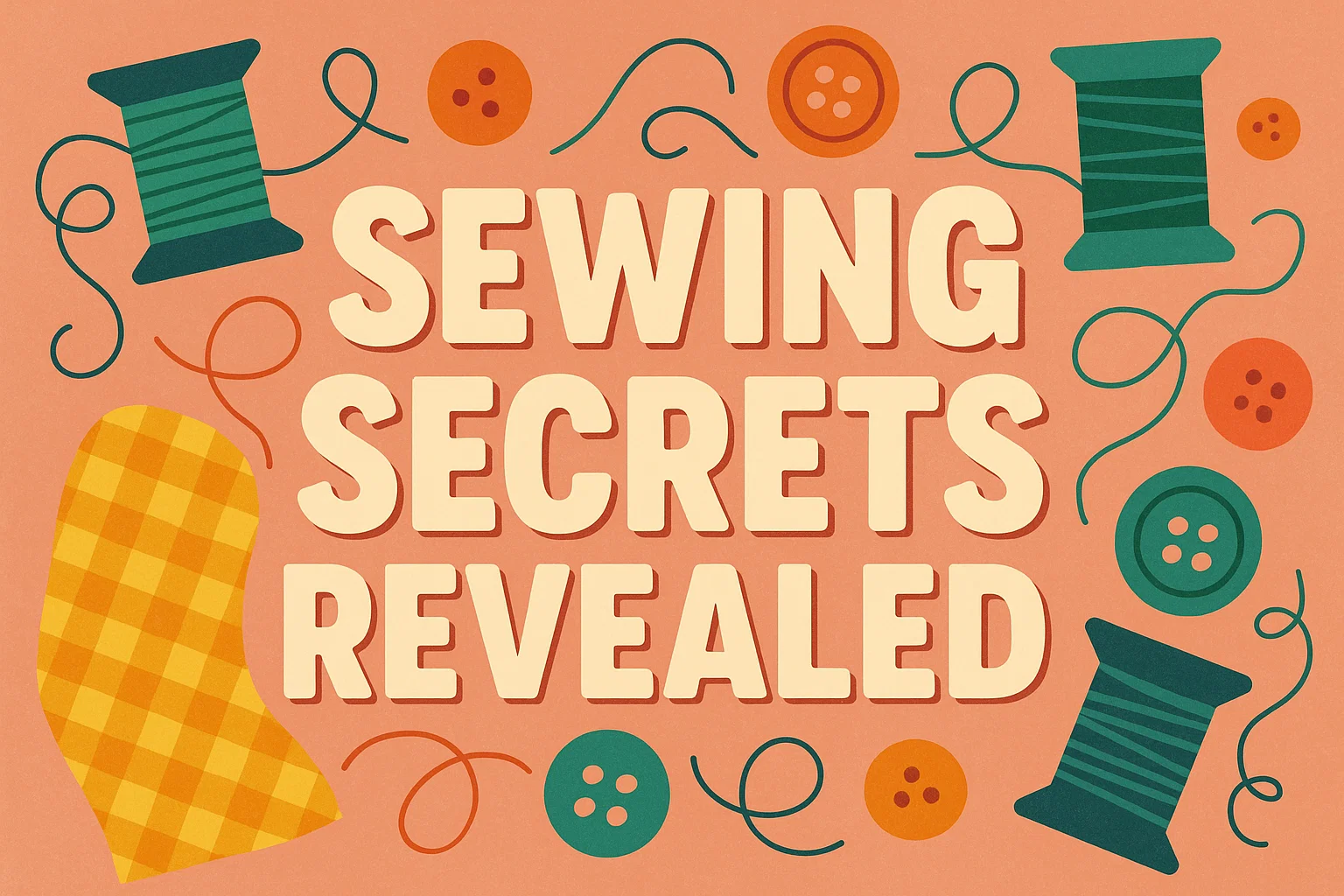Sewing Tips and Tricks 10 Sewing Secrets Revealed for Expert-Level Creations
Sewing Tips and Tricks: 10 Sewing Secrets Revealed for Expert-Level Creations!
Ever spent hours on a sewing project only to realize your seams look like a toddler went wild with a glue gun? Yeah, me too. But here’s the good news—sewing doesn’t have to be a battle between you and your machine. With a few insider tricks, you can transform your projects from “meh” to magnificent in no time.
I’ve been sewing for years (and made every mistake in the book), so trust me when I say these 10 sewing secrets will save you time, frustration, and maybe even a few pricked fingers. Ready to level up? Let’s get stitching!
1. The Magic of Pressing (No, Ironing Is NOT the Same Thing)
You might think pressing is just ironing with a fancier name, but oh, how wrong you are. Pressing is the secret weapon behind professional-looking seams. Here’s why:
- Ironing = sliding the iron around (great for wrinkles, terrible for precision).
- Pressing = lifting and placing the iron (preserves shape and sharpens seams).
Pro tip: Always press your seams before you sew the next one. Skipping this step is like building a house on a crooked foundation—disaster waiting to happen.
2. The Right Needle for the Right Fabric (Yes, It Matters!)
Using the wrong needle is like trying to cut steak with a butter knife—possible, but why torture yourself? Here’s a quick cheat sheet:
- Universal needles – Good for most woven fabrics (cotton, linen, etc.).
- Ballpoint needles – Must-have for knits (unless you enjoy skipped stitches).
- Denim/Leather needles – Thicker, sharper, and built to handle tough materials.
FYI: Change your needle every 8–10 hours of sewing. A dull needle causes more problems than your ex ever did.
3. Thread Tension Troubles? Here’s the Fix
Ever sewn a seam only to find loops on the underside? That’s a tension issue, and it’s not your machine’s way of pranking you (though it sure feels like it).
- Too loose? Tighten the upper tension slightly.
- Too tight? Loosen it up.
- Still not working? Re-thread the machine. 90% of tension problems vanish after this.
Bonus trick: Test tension on a scrap of your project fabric before committing to the real deal.
4. Pinning vs. Clipping: Which One Wins?
Pins are great, but have you met wonder clips? These little guys are life-changing for:
- Thick fabrics (like denim or leather)
- Slippery fabrics (satin, I’m looking at you)
- Curved seams (pins distort the fabric; clips don’t)
IMO: Use pins for precision, clips for bulk. Best of both worlds!
5. The Hidden Power of Seam Allowance Guides
Ever sewn a seam only to realize it’s wobbly? Your machine probably has a seam allowance guide—use it!
- Most machines have markings for ¼”, ⅜”, ½”, and ⅝”.
- Stick a piece of washi tape on the machine bed as an extra visual guide.
Pro move: If your machine doesn’t have markings, make your own with a sticky note or painter’s tape.
6. How to Sew a Perfect Curve (Without Losing Your Mind)
Curves can be evil, but here’s how to tame them:
- Go slow—speed is your enemy here.
- Pivot frequently—lift the presser foot, adjust, and keep going.
- Clip notches into the seam allowance to help it lay flat.
Personal anecdote: The first time I sewed a curved hem, it looked like a rollercoaster track. Learn from my mistakes.
7. The Secret to Invisible Zippers (They’re Not That Scary, I Promise)
Invisible zippers seem intimidating, but with the right foot (an invisible zipper foot), they’re a breeze.
- Iron the zipper coils open before sewing.
- Sew as close to the teeth as possible—this hides the zipper completely.
Fun fact: I avoided invisible zippers for years before realizing how easy they actually are. Don’t be like past me.
8. Stop Thread from Unraveling with This Simple Trick
Tired of your thread unraveling the second you start sewing? Knot the end before threading the needle.
- Hold the thread between your fingers, wrap it into a loop, and pull the end through.
- Boom—no more unraveling.
Why didn’t anyone tell me this sooner?
9. The Best Way to Finish Seams (No Serger Needed!)
Don’t have a serger? No problem! Try these easy seam finishes:
- Zigzag stitch – Quick and effective.
- French seams – Fancy and durable (great for sheer fabrics).
- Pinking shears – Old-school but works in a pinch.
Pro tip: If your fabric frays like crazy, zigzag before sewing the seam for extra security.
10. Presser Feet Are Your Friends (Use Them!)
Most sewists use the standard presser foot for everything, but your machine probably came with others. Here’s when to switch:
- Walking foot – For thick layers or slippery fabrics.
- Zipper foot – For, well, zippers (duh).
- Buttonhole foot – Makes perfect buttonholes every time.
Final thought: If your machine has special feet, use them. They’re like cheat codes for sewing.
Final Stitch: Time to Put These Tips to Work!
There you have it—10 sewing secrets that’ll take your projects from “homemade” to “handmade with love (and skill).” Whether you’re a beginner or a seasoned stitcher, these tricks will save you time, frustration, and maybe even a few choice words for your sewing machine.
Now, go forth and sew something amazing! And if all else fails… just call it “rustic charm.” 😉
What’s your favorite sewing hack? Drop it in the comments—I’d love to hear yours!







